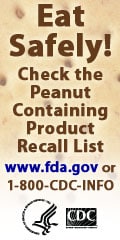It is important to note that the WHO pandemic phases are based on the geographical spread of a novel influenza virus, not the severity of illness.
The WHO declaration does not change how we are currently dealing with the outbreak here in Massachusetts. We have taken this outbreak very seriously from the beginning and have been on a heightened state of alert since the first case was identified in the United States.
We continue to work with our partners at the local, state and federal levels on the H1N1 response in Massachusetts.
Many of the elements of our planning efforts for pandemic influenza have been utilized during our response to H1N1 flu. We have been preparing for a pandemic for years and will continue to direct and adjust our response as needed based on what we are seeing here in Massachusetts and elsewhere.
However, this declaration serves as a reminder not only for government – but for businesses, communities and individuals as well – to take steps to prepare in the event that this flu outbreak becomes more severe. We have information about steps everyone can take to be better prepared on the DPH H1N1 page.
Update on Massachusetts:
We continue to see person-to-person spread of the H1N1 flu virus here in Massachusetts, and the level of influenza activity in our state is much higher than it normally is at this time of year. CDC has reported that H1N1 flu has now spread to every state in the nation. Likewise, every county in Massachusetts has seen confirmed cases on H1N1 flu. The CDC has reported that while most areas of the nation are seeing a downward trend in flu activity, the New York and New England regions -- specifically Massachusetts -- continue to see elevated activity. You can see CDC's FluView flu surveillance data here.
Massachusetts and the other New England states are in "Region I" and New York is in "Region II". The information regarding Massachusetts on FluView is generated by data that we provide CDC through our routine influenza-like illness surveillance systems. This new strain of virus is the predominant strain of flu that is circulating now and is likely the cause of an increase in visits to health care providers throughout the state.
Many schools, particularly in Eastern Massachusetts, continue to feel the brunt of the H1N1 outbreak with a number of systems dealing with an increase in absenteeism of students and staff. However, as of today only nine (9) schools are reported to be closed because of H1N1 flu (8 in Boston, 1 in Randolph).
Cases:
There are now 1,153 confirmed cases of H1N1 flu in Massachusetts (77 more than our last update).
There have been 80 people hospitalized since the outbreak began (5 more than our last update).
Age breakdown on confirmed cases:
0-4 171
5-24 685
25-64 285
65+ 11
Unknown 1
Flu outbreaks evolve in unpredictable ways; it is impossible to know whether this outbreak will decrease, remain the same, or grow in coming weeks, and whether the illness will remain at its current severity which, on the whole has been relatively mild for most people.
Some severe cases may occur in people with underlying risk factors such as young children, the elderly, and people with chronic medical conditions.
Guidance for the Public:
Preventing the Flu: Because there is no vaccine for H1N1 influenza, public health officials remind all Massachusetts residents to continue taking simple steps to keep themselves and others healthy.
- Wash your hands frequently with soap and warm water or use an alcohol-based hand sanitizer.
- Cover your cough with a tissue or cough into your inner elbow and not into your hands.
- If you are sick stay home from work and if your child is sick keep them home from school for 7 days, or 24 hours after your symptoms go away—whichever is longer.
- Stay informed about the latest developments on the H1N1 flu.
Most people that get the H1N1 flu do not need to be tested or seen by a doctor. They can simply stay home, get plenty of rest, and take over-the- counter medication for their fever, aches and pains. Although the H1N1 flu doesn’t seem to be more severe than the seasonal flu, certain groups of people may be at greater risk for complications from any flu – whether seasonal or H1N1.
Anyone in the groups listed below who has a fever, along with a cough, sore throat or runny nose, should contact their doctor to talk with them about treatment with antivirals. Antivirals work best if they are taken within 2 days of when symptoms start, so even people with mild illness should call their doctor right away if they have any of these conditions.
- Children less than 2 years old
- People age 65 years or older
- Pregnant women
- People who have chronic health problems like heart disease, asthma or diabetes
- Children and teens who are on long-term aspirin therapy who might be at risk for experiencing Reye’s syndrome after influenza virus infection
- Adults and children who have compromised immune systems caused by medications or by HIV infection
------
This post was originally published on the MA Department of Public Health Blog, Commonwealth Conversations, and is reproduced here with the kind permission of the MA DPH.





